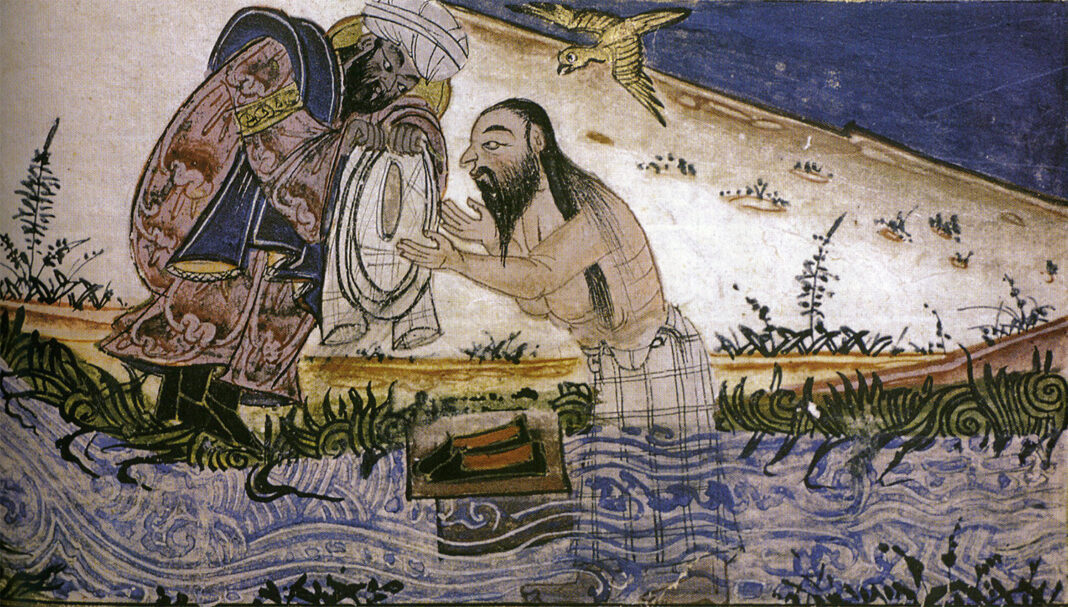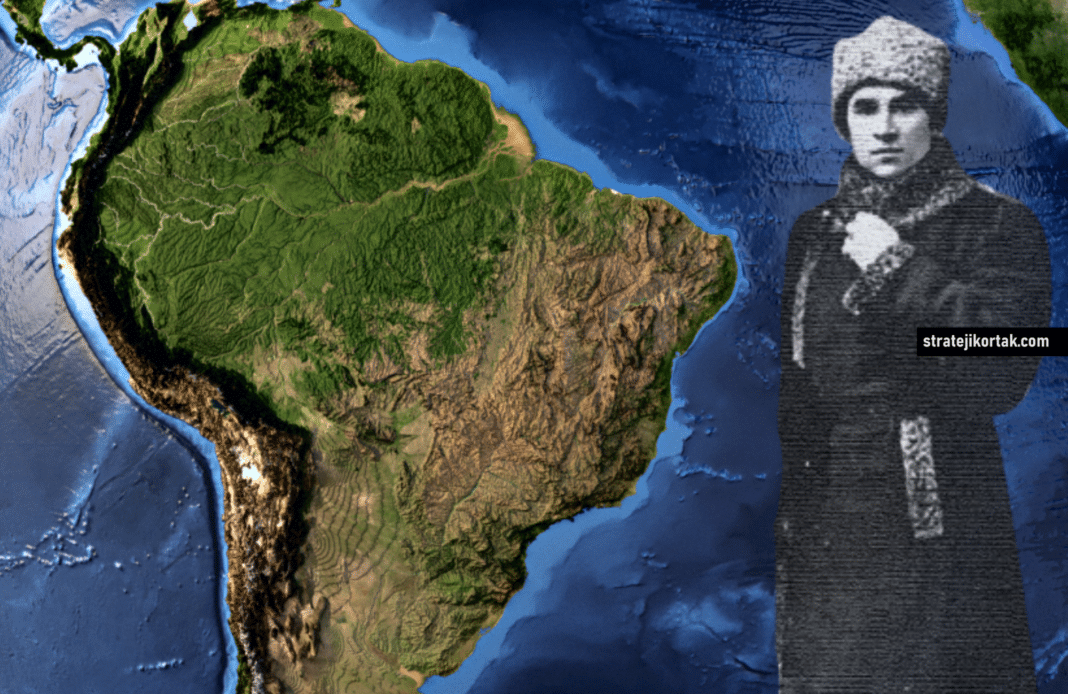Islam and The Reconstruction of State
Islam had significant effect in world history. In a one century, after its spread, Islamic values and the conquests in the name of Islam spread from Central Asia to Iberian Peninsula. However, in this article, I will not elaborate the such a great advance into the world history. While everyone is arguing about the impact of Islam into the world politics, I want to pay attention to another issue; emergence of Islam. Emergence of such a divergent religion, namely monotheistic and emphasize non-binary God with huge social reforms, inside of the Arabian Peninsula, where dominant system of thought consisted on polytheistic divine structure with granting status-quo relations inside the social hierarchy, pointing out that Islam is not only about a sole divine message of conquests or reconstruction of world politics, but has a more distinct side. My paper derived from the answering this question, and my thesis claims that, Islam, when it started to spread with the first divine message, has a revolutionary aspect inside the Arabian Peninsula, promising an egalitarian and inclusive world, while abolishing the old political structure. In order to explain that, I will divide my paper in to two general segments; in the first phase, I will explain the pre-Islamic socio-political and socio-economic environment of the Arabian Peninsula, starting with the political crisis in international environment, fall of Himyarite Kingdom, long lasting wars between Sassanid Empire and Byzantine Empire, and their contribution to the growth of commerce economy and its structural relation in Meccan political system, as well as the how its changing the Meccan and other Arabic tribes world thorough socio-economically and socio-politically. This phase is also a crisis phase due to its degradation of Arabic social structure thorough elite over-production, increased urbanization, expansion of use of financial debt, increased wealth gap and population over-production. In that sense, revolutionary pre-requisites were already done in the Mecca. With the emergence of Islam, Prophet Muhammed (peace be upon him), with the divine guidance of Quran, ignited the fire of revolution in Mecca. Second part will be consisting on the revolutionary aspect of the emergence of Islam and its politics, from its first followers to the choose of city for Hijrah, rise of the Islamic values and reforms under the banner of Prophet Muhammed. Thus, in this part I will also mention about the establishment of such a revolutionary state and its success against the status-quo organisations of the Arabian society. In order prove the revolutionary aspect of the Islam, I will use the cyclical trends and domestic dynamics in order to explain changes inside the Arabic socio-economic and socio-political structures. In conclusion, I will briefly summarise my idea and showing that, both in Liberal-Classical thought and Marxist-Heterodox understanding, Islam emerged a revolution and succeed it, through establishment of a revolutionary state under the leadership of Prophet Muhammed. Despite the giving a so much part for the theoretical frameworks, I will show the theoretical background inside the story itself, in order to establish much more great vision for better understanding of the reality.
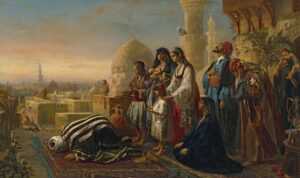
Pre-Islamic Mecca: Prerequistes for Revolution
Arabia, before the divine message of the Prophet, was already developed and reached its peak. During the Himyarite hegemony over the Hejaz, Mecca can be considered as a mere periphery for the trade routes, just a rest point for the caravans that went to Syrian and Egyptian markets, in that sense, Mecca’s very own existence heavily depended on the its location in trade routes of the western Arabia which is connected to the surplus producing region of Yemen with Syria (Ibrahim, 1982: 342). In that sense, Mecca, during the Himyarite hegemony over the Western Trade route, was a periphery, and limited access to the Western Arabian trade route. However, distinguishable favour of the Mecca also crucial for the Western Arabian trade route; Kabe and the Zamzam wells, first one is important due to its historical-religious importance and concept of haram, which emphasise an sacred zone that no blood will be shed, and accumulate the Meccan elites their power, secondly, Zamzam well is crucial, due to very essence of it; a water source across the desert, made Mecca valuable periphery for the caravans, as a rest place and with the combination of the Kabe, enabled the Kabe as a place of minor trade area, an extension of the core-trade relations, between the Yemeni and Syrian trade routes. However, Meccan trade power did not only derive from these structural impulses, also affected from the essence of the city. Mecca, found in nowhere but the desert, no agricultural oasis, most close fertile lands can only be found in the Yathrib and Taif can be found, nor industrial output can be stipulated due to lack of natural resources, heavily depended on trade for the living; If Mecca had any attractions to offer, Himyarite princes as the head of them armies would long since have hurried there. Their winter and summer are equally desolate. No bird flies over Mecca, no grass grows. There are no wild beasts to be hunted. Only the most miserable of all occupations flourishes here, trade (Essad Bey, 1936: 44).
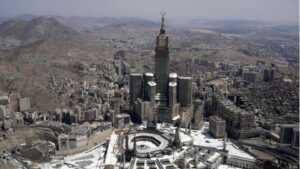
This quote actually shows some features of the era. First of all, as we mentioned above, Himyarite Kingdom had a certain dominance over the region, even their armies reached Mecca and other places, and control the southern sides of the Arabia. Secondly, Mecca nearly had no resources for the flourish of an subsistence economy in that sense they heavily depended on the other forms of economy, which brings us to the other feature, thirdly, Mecca re-organise its economic originations into the commerce-based economy, through use of Zamzam well, which allowed Mecca to became a significant periphery inside the Western Arabia trade route, and secondly, Kabe, a religious-ideological place where the no blood will be shed, haram, by obliged to do so, they gained a power of safe-haven, for the caravans, which mostly endangered by the threats of the Bedouin tribes across the region.
Mecca’s economic power started to arise when Himyarite Kingdom faced with critical internal pressures and started to lose its hegemonic power in the Western Arabian trade route. Until that moment, Quraish Tribe, consolidation of several clans in the leadership of Qusayy ibn Kilab, main residents of the Mecca, leading merchants of the city, however, their power limited by the Himyarites and the Lakhmids of Hira, which were the main dynamic powers that spread their influence over the Arabia on commercial way (Ibrahim, 1982: 343). Meccan merchants’ power, despite their willingness, limited only to the Haram and Kabe, they further diversified their commercial skills. In the middle of the fifth century, with the internal crisis of the Himyarite Kingdom, Arabian trade routes started to effect negatively, and dislocations occurred between the production and trade. This scenario pushed the Meccans to fill the void left by the Yemenis’ departure. Because the Meccans lacked the necessary infrastructure for this new duty, they had to create their own to transport themselves and their money outside of Mecca. However, Meccans did not have enough social and economic institutions for the such act, first of all, they did not have enough protection for the caravans and secondly, most of the Meccan merchants did not have adequate capital in order to venture a new caravan. Hashim, ancestor of the Prophet Muhammad, through four acts, became the key actor for the restructuring period of the Meccan city from periphery to the semi-core position. First of all, Hashim resolved the problem of security, through ilaf, agreement between the Bedouin tribes and Quraish that provide safe passage and protection, secondly, cease of itifad, ritual suicide of the Meccan merchants, in order to avoid the debt burden resulted from the disastrous venture attempts, eventually bankrupts, which separate them from the remaining clan members in terms of debt, Hashim, in order to stop this act, claimed that, itifad started to overtake them, and led them weak and less numerus compared to the others, and introduced mudaraba, a partnership that merchants pool their capital for formation of one huge caravan that can benefit from every one, from small investors to big sayyids, on the other hand, this also led to wider commercial exchange and diversified the enterprises done by Meccans, compared to the Himyarite merchants, thirdly, Hashim maintained agreements with the Abyssinians and the Byzantines for the tujjar al-Arab, convinced these states to the fiscal advantage of their caravans and products, and allowed Meccan caravans trade freely in Abyssinia, Byzantine, and lastly, he bear important role in for the Kabe, dwelled water-wells, namely, Bezr and Sicille, bear the role of Sikayah and Rifadah, water and food supply role for the pilgrims of the Kabe, that granted him to the huge respect and fame across the other Arabian regions (Ibrahim, 1982: 344-345) (Sarıçam, TDV).
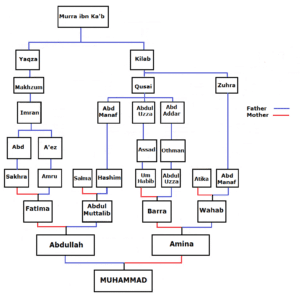
Few conclusions can be derived from these acts. Hisham played very crucial role for the semi-core Mecca, firstly, he created a safe zone for the Meccan traders and created an alliance with the Bedouin tribes and Quraish. However, it is also worth to mention that, Quraish, contrary to its nomadic origins, became urbanised in Mecca, and have a distinct relation with the Bedouin tribes, this shows us a diversified division of labour inside the Mecca. Secondly, through ending itifad, Hashim also ended the small ventures abroad that created only disasters for the Meccan traders, and paved the way for the monopolistic trade dynamics, that later contribute to the Prophet’s revolution through Islam, and eventually re-organise class relations inside the Meccan society. Thirdly, one can argue that, through free trade agreements with another kingdoms, Hisham allowed Meccans to enjoy from benefits of the Western Arabia trade route, that was only had small benefit during the Himyarite hegemony, with these trade agreements, Meccans now able to accumulate their capital in correlation with the organisation of large-caravans. Lastly, in overall analysis, Hisham and his acts, transformed the Mecca from significant periphery to the important semi-core region that organise the region’s trade and create dynamism inside the system which later contribute to the rise of Islam, and intra-class conflict inside the Mecca.
Transformation of the Meccan socio-economic structure from periphery to semi-core brought even-more dynamic class relations to the Mecca. This dynamism eventually ended up with a revolution done by Prophet’s leadership. However, prerequisites of the revolution build upon three pillars; masses, elites and Meccan city-state’s financial status in a given period. Before jumping into these pillars, Meccan class dynamics worth to mention. With the increased complexity of the Meccan trade to outside, new concepts emerged, such as hilf, alliance matrixes both inside and outside of the Mecca for protection, and establishment of the trust-worthy trader relationships (İbrahim, 1982: 345). Classes basically divided into four categories, and based on the ownership of the merchant capital, and challenged the existed tribal affiliations of the Meccan social structure. At the top of the list, there were sayyids, wealthy merchants that leaders of the their clans, main formers of the clan-alliances, monopolistic anti-market group of the society, on the second level, there were clan member free men who had various professions that build the division of labour in the society, in the third level, there were mewalis, who were “clients” of the certain clans that under protection under the patronage clans, mewalis are important due to their role inside the society; they were not clan members, they did not have any previous blood-relations within the their patronage clan, however, due to their professions and labours, accepted themselves to the clan and provided them certain capital and labour, moreover, mawali’s rights in a given clan also inherited to its next generation and granted certain rights and duties for its next generations such as when one mewali insulted or attacked by other clan members, patronage clan leader had to avenge this act in order to protect its mewali in order to protect its honour, moreover, concept of mewali was not a static class, social mobility granted for mewalis and mewalis can reach the level of halif, ally, lowest status inside the Mecca given to the slaves, qinn, either captured from battles or lost their freedom due to their debts, generally caused by the usury (İbrahim, 1982: 346).
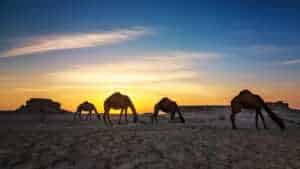
Inside this class dynamics, several analyses can be reach. First of all, existence of the sayyids, wealthy merchants shows that, due to prolonged mudaraba-system, joint ventures abroad, several groups asserted their capital power inside the city, namely three important clan; Banu Umayya, Banu Makhzum, and finally, Banu Hashim, later I will mention in intra-elite competition. Furthermore, establishment of long-distance trade system through protection and trust alliances across the Western Arabia trade route and joint-venture merchant methods, Meccan family elites established important social group which nearly dominates the Meccan economy, even the later least powerful family, Banu Hashim, maintained strong position in the religious duties and named with it. However, despite such a centralised and monopolised anti-market tendencies, Mecca was never showed any authoritarian regime, contrary to this, Meccan socio-political structure established quite decentralised and oligarchic regime, where the most of the decisions taken with small council of important families members, and they did not have any central executive organ or council did not have any direct legislative power, this issue later paved the way for the Prophet’s revolution inside the Mecca, moreover, lack of centralisation inside the sayyids caused three important results; firstly, there was huge centralisation of the economy due to inner competition between the Sayyids, secondly, there was important centralisation of the religious activities, Mecca resembled every important god of the other Arabic states in order to establish a semi-core in the Mecca, and thirdly, lack of indecisive alliances between the Sayyids, which established grey zones against the Prophet during the his duty of spreading the Islam, which gave Prophet a huge advantage (Wolf, 1951: 340). Position of the mewalis also worth to take into consideration. Mewalis were not kin-originated group, mostly derived from the ex-slaves or foreigners, or outsider Arabs, and even that position, they somehow represented a class inside the Mecca. In that sense, on the other hand, mewalis are also heavily depended group, to the clans, due to reason that they were mostly not producers of certain goods, but they provide their services, this issue showed us that Mecca, during the pre-Islamic period, deepened its division of labour inside the Mecca, and established a real “city”, in the conceptualisation of the Charles Tilly, representation of state as a centre of capital and wide civil division of labour which generate income for its residents, moreover, Mecca was an actual “city” because, it was not the tribes, kin-based relations that maintained prosperity and security of the Mecca, but the their widened relations with the outsiders, through halifs, mewalis, other tribes, slaves, service providers, religious points etc., such a complex relations, eventually widened the concept of Quraish, which actually means the “to collect together” (Wolf, 1951: 331) (Tilly, 1992). In that sense, Mecca was a city that ruled by the Sayyids. On the other hand, Mecca was interestingly attracting for the masses due to two reasons; debts and Kabe. Regarding the issue of debt, people who were in the periphery of the Mecca, generally indebted by the Meccan merchants, and brought down to the city, either as a slave, or as a daily worker, in order to pay their debts, moreover, these people, were forced to leave their tribes by the merchants, in order to prevent their rely on their tribes collective wealth, such an act, alienation from both capital-ownership and clan relations, gave them a new identity inside the Mecca, can be classified as a working poor, moreover, provision of large service sector under the control of the sayyids and their families related to the care of caravans and merchant system of the city, further entangled the rich and poor in the streets of the Mecca. Moreover, concept of slave also needs some explanations. Slaves, as a general rule for the early Medieval Age’s and Antiquity’s character, considered as a form of capital by their owners, which have two meanings, firstly, they can be use whatever their masters want, mostly in the prostitution and the caravan guard, animal cares, and also, they needed to take care by their masters. Despite the horrific story of the Roman slave system, work or die, Meccan slave system was differing from it several ways. Firstly, slave ownership considered as normal, as well as the Romans, however, in order to continuation of the services provided by the slaves, they had to taken care by their masters, adequate feed, sleep and free-time cycles, secondly, a system of payment, main difference from the Antiquity slave systems, and a possibility of freedom, either as payment for their slavery or gave of freedom from the wealthy merchants. Thirdly, many mewalis, clients came from the slave status, who gained their freedom, in that sense, slavery was not a static concept inside the Meccan society.
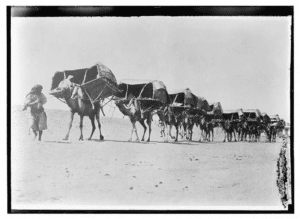
On the other hand, Kabe had a significant importance due to very simple reason; it was a religious zone, that attracted pilgrims across the Arabia, eventually promoted its own market, that benefited by both masses, through way of socialisation through sacred, a peaceful environment of exchange of ideas, and for the elites, which are profited from the zone of haram through enlarging it and accumulated more capital their wealth. Last important issue, for a prerequisite for a revolution, intra-elite competition, we saw that the, power dynamics between the Banu Umayya, Banu Makhzum and Banu Hashim, either through honour duellos, or protection of client, or establishment of another alliances, mostly known conflictual factions in Quraish, Al-Ahlaf and Al-Mutayyabun, showed us a fact that, Mecca’s political power also derived from the these intra-elite competition, due to elites needs for the manoeuvring, in the heavily merchant oriented city, reasoned only through two ways, series of wars against the “aliens”, or accumulation of intra-elite configuration in order to increase degree of manoeuvre. Throughout the pre-Islamic Mecca period, we saw both these elements, in terms of waging war against the “alien”, Fijar Wars, or demanding fertile part of lands from the Taif, or intra-clan competitions between the Banu Umayya, Banu Makhzum, and re-position of the Banu Hashim before the birth of Prophet.
Way of Revolution: Islam
Up until this point, we understand how Meccan society transformed to an urbanised, complex division of labour society after the introduction of the Hisham’s developments into the society, moreover, we understand, how anti-market foundations established through big families monopolisation of the Meccan economy, namely, Banu Umayya, Banu Makhzum and Banu Hisham. Before the divine revaluation, Meccan society established two pre-conditions of the revolution, in Brennerian terms, firstly, rulers now lost their re-productive ability in terms of ideology, due to increased depended population inside the city, namely, indebted slaves and mewalis, and secondly, masses lost their means of production, however, this lost of means did not directly related to the agricultural input, as Brenner improvised, in a mercantile economy like Mecca, masses means of production derived from the services industry and their freedom, in that sense, increased indebtment through usury and monopolised Meccan market and caravans by the big monopoly families, especially Banu Umayya such as in the example of the Fijar Wars, people nearly lost their hope to old way of financially independent, free merchants and service providers, in order to alive in the Meccan semi-core sub-system, they had to be move Mecca, found adequate equals as a counterparts, and grant Sayyids usury for a trade (Brenner, 2003). On the other hand, increased population pressure, elite competition on scarce economic and symbolic resources, and usury bubble over the non-binding legislative and non-central executive organ further pushed Meccan masses to another solution; Islam. Revolutionary aspects of Islam had two important phases, at the first phase, Islam commanded Muhammed Prophet to a passive resistance against the old relics, and mainly based on the establishment of the critique of the old ideology, Arabic paganism and its actions towards to the world, desacralisation of the Arabic paganism. In the second phase, started with the Hijra, in Yathrib, Prophet established foundations of the revolutionary state, which years later assert dominance against the Meccan elites.

The first phase of Islam, there are several important characteristics about the nature of revolution. Firstly, when Prophet aware with the divine messages of the Allah, and spread them into the masses, first believers interestingly have similar background; many of the were younger brothers and sons of notable merchants, who fallen out of the first in their tribe, or slaves, this shows the spread of Islam took very focused way of injection; at the first sight, Islam accepted by the lower strata of the Meccan society, especially by the slaves and the mewalis, however, examples such as Abu-Bakr, wealthy Meccan merchant whose father was a chief of Banu Taym, as one of the earliest convert, showed us that the, Islam also attracted to the free men of the clans, moreover, rather than opposition to Islam, introduction of a vision that rejected the past, showed us another important feature of the Meccan society; anti-market tendencies reached its peak and other clans demanded a social mobility inside the society (Watt, 1977: 36). First phase of the Islam mainly passive resistance due to non-violent methods done during the spread of religion, which also encouraged the Meccan elites to the further push their ill-treatment to the Muslims, such as the martyrdom of the Sumayyah bin Khayyat by Abu Jahl, head of the Banu Makhzum, or torture against the Bilal the Abyssinian, however, despite the ill-treatment, passive resistance derived from two reasons; first of all, prophet’s uncle, Abu Talib, leader of the Banu Hashim, granted protection over the Prophet, despite the diminished power of the Banu Hisham, they were still active and influence over the Meccan elites, which prohibited any direct attack against the Prophet, secondly, as we mentioned above, Meccan elites did not have any executive organ, or binding legislative power over the city, so, as long as they did not have consensus over the acts of Prophet, elites aggression against the Prophet and Islam only considered as an individual aggression, not as an collective action against the Prophet. However, passive resistance eventually ended due to three reasons; firstly, conversion of the Uthman and Hamza, shaken the Meccan elites, Banu Umayya and Banu Makhzum elites, due to their strong position in the ancien regime, and further developed form of alliance in competition against the Islam, secondly, strong-violent opposition from the Taif against the divine messages, an important industrial production site in Arabia, and the death of Abu Talib, which replaced by the Abu Lahab, strong opposition against the Prophet and removed Banu Hisham’s protection for the Prophet and sided with the Banu Makhzum, Abu Jahl, led the Prophet to the end of the passive resistance and paved the way for the Hijra, emigration to the Yathrib (Buhl and Welch, 1993: 360-376). Second phase of the Islam started with the Medina Convention. With the convention, Prophet established an egalitarian community through binding every tribe in the Yathrib in the concept of Ummah. Moreover, in order to provide solidarity and comradeship between the local people and the Meccans, concept of Ansar and the Muhajir (Serjeant, 1978: 4). With egalitarian conception and the strong emancipation to the comradeship, Prophet firstly broke the concept of mewali, a dependent client, and reorganise it through addressing Allah as a sole patron and the believers are only clients of the Allah. Moreover, partially abolishment of the usury inside the Ummah, ended up the masses lost of means of production, and re-established newly founded state over the Yathrib, later called as Medina, the City. With the establishment of the “city”, Prophet entered into the aggressive phase of the spread of Islam, waged wars against the Mecca. These wars, early based on the raids to the caravans that going to the Mecca, which believed that the as long as the raids ended successfully, adequate resource will flow to the Medina and Mecca will suffer from the lack of trade, which took decades of building, it has also another important point, by doing so, Prophet erode the concept of hilf, erode the relationships between Meccan merchants and the peripheral tribes who supposed to be protect these caravans, and let the Mecca alone inside the its own system (Ibn Ishaq, Guillaume, 1955: 281-287). Eventually, Mecca, with get sick of these raids and loss of significant amount of money, decided to the attack Prophet for end this conflict. At the Battle of Badr, Prophet’s forces became victorious, however, what is important in this battle was the death of Abu Jahl, due to heavy wounds, which led Banu Umayya family alone in the power politics, at the first sight can be seen as a disadvantage but, also huge problem in the Meccan political structure, which had no executive organ (Glubb, 2002: 179). However, Mecca was still a semi-core region with superior resources, alongside with a military history, and quickly took avenge of the Battle of Badr with Battle of Uhud, including death of Hamza and conspiracy that Prophet was killed, led the Muslims to the defeat (Cook, 2007: 24). Abu Sufyan, leader of the Banu Umayya, after the victory, encouraged to the new attack directly to the Medina, through forming alliances with other tribes’ leaders, however, Prophet now, with morally wounded soldiers, followed new strategy that break up these alliances. At the end, siege against the Medina failed due to two important reasons, lack of support for the Banu Umayya from other tribes, which were long-lasted domination under these families and searching for a social mobility which only granted by the Prophet, through accept of Islam, due to this reason, Islam had a very political nature, and secondly, succession of the Medina’s entrenchment against the Mecca’s military forces (Rodinson, 2002: 209-211). With the end of the wars, Truce of Hudeybiyyah emerged. This truce can be considered as first success of the revolutionary state, due to two reason, firstly Prophet identified as an equal by the Meccans, and secondly, Medina now due to end of military tension, able to became a new semi-core of the region, through routine pilgrimages that enhanced the trade power of Medina and establish a higher status for them. On the other hand, identification of the Prophet as an equal showed clearly showed that the, ancien regime of the Mecca did not have adequate power in order to combat against the new religion and its believers, Meccans finally lost their last chance to overtake the means of reproduction that they started to lose since the first divine message. Final act done with the conquest of the Mecca, due to nullification of the Hudeybiyyah Truce, which was one of the earliest examples of the glorious revolution, a change of system without bloodshed (Peters, 2003: 240). By conquering Mecca, Prophet restructure the old Meccan dynamics into the new one; from centralisation of the religion to singularity of the religion, Allah became the only god for worshipping and also completely different from the old gods, for example, in the Arabia, Allah was the only god that did not attributed to the one gender. This singularity bring another form of centralisation to the Mecca, centralised rule under the banner of Prophet, furthermore, trade and economy now became decentralised in order to abolish monopolistic tendencies of the ancien regime, diminished the power of Banu Umayya in Arabia, eventually at the end, with a visionary religion, Mecca, as a new core in the Arabian subsystem, through leaving its role to the Medina, forced Muslims to the new expeditions across the Arabia, and established a balance of power against the Byzantines and Sassanids.
Conclusion
After the fall of the Himyarite hegemony over the Western Arabia trade-route, Mecca started to develop its own power. Up until the emergence of the Hisham, Arabs were disorganised, based on the small-individual ventures across the Western Arabian trade-route. With the introduction of Hisham’s joint-ventures, and re-organisation of the trade system, Mecca started to establish city dynamics that prelude to revolution of Islam. Monopolies established by the big family circles restricted other tribes to develop social mobility in the Meccan socio-economic structure, use of usury and further indebtment of the free-men, and increase of the slaves established huge amount of dependent people, which ignite the engine of rich and poor division and inability of the reproduction of the old pagan ideology in the Mecca, alongside with the centralised economy over the Kabe. Prophet occurred in that moment, with his divine message, he broke the old ideology, which is unproductive now, and moved to the Yathrib, in order to establish new polity through Medina Convention. Through raids and wars, Prophet asserted his dominance alongside with the establishing alliances with the non-Muslim tribes outside of the Mecca, and finally conquered Mecca, re-organised through singularity of religion, and centralised governance, with decentralised economy, ignite the engine of social mobility, and established core position of Mecca, and finally established revolutionary state in Mecca, which later reach from Central Asia to the Spain.
BIBLIOGRAPHY
John Bagot Glubb, 2002, The Life and Times of Muhammad, Hodder and Stoughton, 2002.
Eric R. Wolf, The Social Organization of Mecca and the Origins of Islam, Southwestern Journal of Anthropology, Vol. 7, No. 4 (Winter, 1951), pp. 329-356, University of New Mexico.
Mahmood Ibrahim, Social and Economic Conditions in Pre-Islamic Mecca, International Journal of Middle East Studies, Vol. 14, No. 3 (Aug., 1982), pp. 343-358, Cambridge University Press.
Buhl, A. T. Welch, Muhammad, Encyclopaedia of Islam. Vol. 7, Brill, 1993.
Montgomery Watt, W 1977, ‘Muhammad’, in PM Holt, AKS Lambton & B Lewis (eds), chapter, The Cambridge History of Islam, The Cambridge History of Islam, Cambridge University Press, Cambridge, pp. 30–56.
Maxime Rodinson, Muhammad: Prophet of Islam, Tauris Parke Paperbacks, 2002.
Ibn Ishaq and A. Guillaume, The Life of Muhammad, Oxford University Press, 1955.
Majid Ali Khan, Muhammad The Final Messenger, Islamic Book Service, New Delhi, 1998.
Francis Edward Peters, Islam: A Guide for Jews and Christians, Princeton University Press, 2003.
Robert Brenner, Merchants and Revolution: Commercial Change, Political Conflict, and London’s Overseas Traders, 1550-1653, Verso, 2003.
[/vc_toggle]

